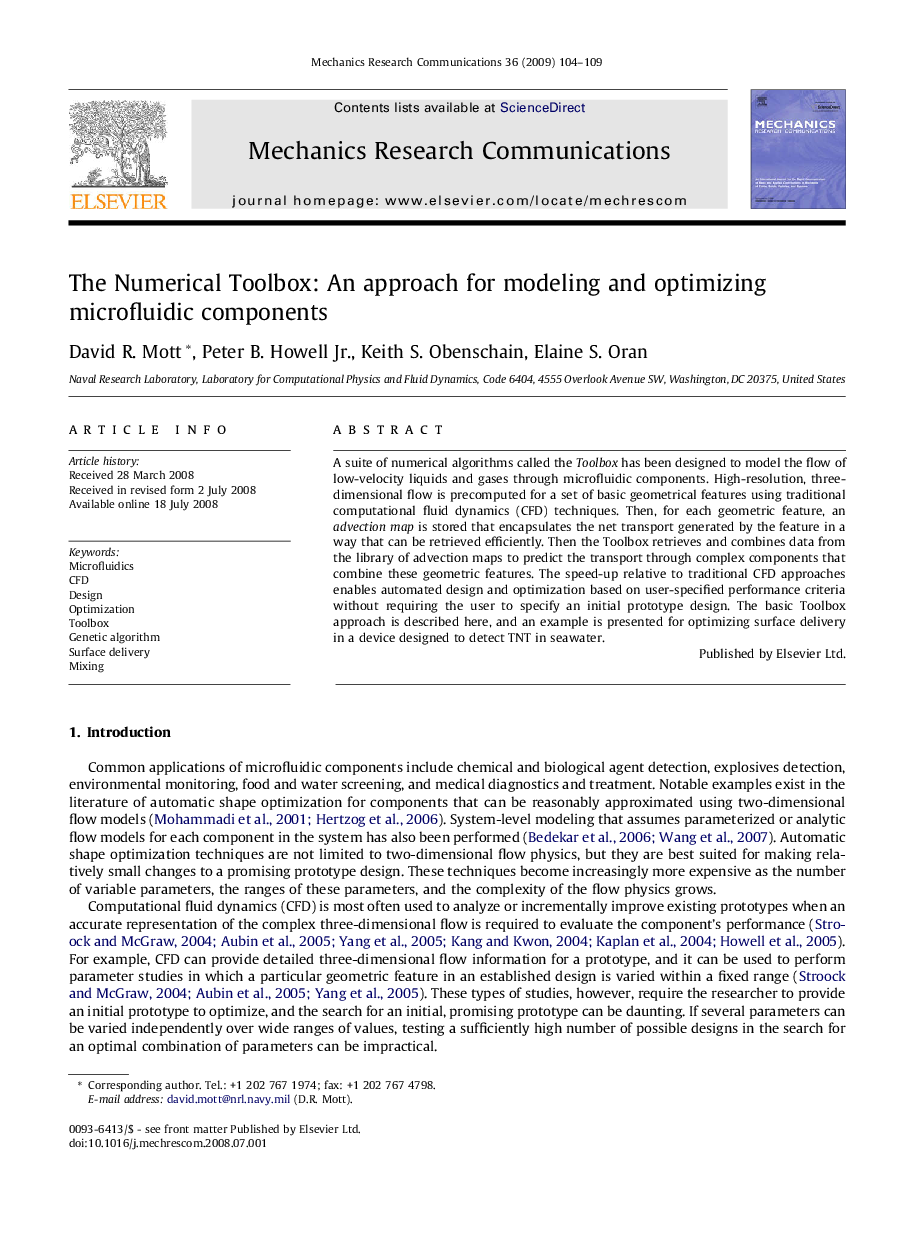| Article ID | Journal | Published Year | Pages | File Type |
|---|---|---|---|---|
| 801836 | Mechanics Research Communications | 2009 | 6 Pages |
A suite of numerical algorithms called the Toolbox has been designed to model the flow of low-velocity liquids and gases through microfluidic components. High-resolution, three-dimensional flow is precomputed for a set of basic geometrical features using traditional computational fluid dynamics (CFD) techniques. Then, for each geometric feature, an advection map is stored that encapsulates the net transport generated by the feature in a way that can be retrieved efficiently. Then the Toolbox retrieves and combines data from the library of advection maps to predict the transport through complex components that combine these geometric features. The speed-up relative to traditional CFD approaches enables automated design and optimization based on user-specified performance criteria without requiring the user to specify an initial prototype design. The basic Toolbox approach is described here, and an example is presented for optimizing surface delivery in a device designed to detect TNT in seawater.
